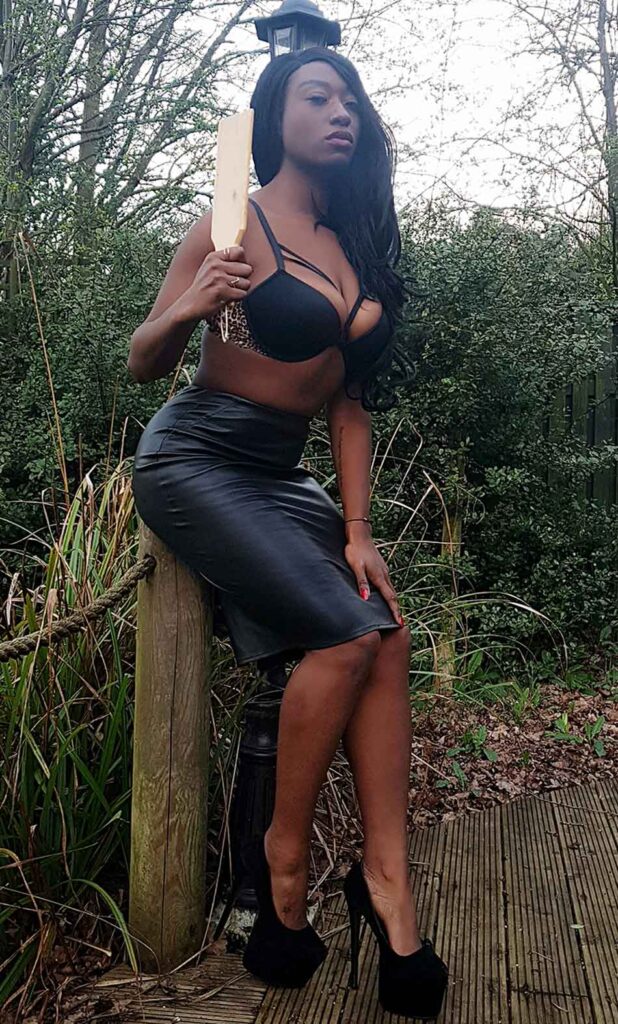If you’re curious about exploring a female led relationship (FLR), but don’t want to get bogged down in complicated contracts or protocols, I’ve got you covered.
I know that some couples just want a simple, customizable approach to FLR that they can experiment with and adjust as they go.
No complicated reading, just a simple plan to read and get going.
That’s why I’ve put together this 5 step plan for starting a simple FLR that’s easy to implement and flexible enough to adapt to your unique needs and preferences.
Whether you’re completely new to FLR or an experienced couple looking for a change, these steps will help you get started on your journey toward a more satisfying and fulfilling relationship dynamic.

Table of Contents
Step 1: Choosing Your Style of FLR
Okay, so before you dive headfirst into a female led relationship, it’s important to figure out what kind of FLR you and your partner are interested in.
There are a few different styles to choose from, each with its own benefits and challenges.
I wrote a whole article on it here, but basically, there’s Motherly, Wife, Professional, Dominant, and Brat Princess.
The motherly style is gentle and nurturing, the wife style is more like equality but the wife runs the household, the dominant style is about expectant attitudes, the professional level is where the submissive acts like an employee, and the Brat Princess style is more of a power trip.
One popular style is the domestic discipline FLR, which is actively like a dominant wife.
Basically, this means the woman takes charge of keeping things in order at home.
Sometimes there are rewards for good behavior, but there can also be punishments if things get out of hand. It’s a great choice if you want to establish a clear structure and maintain discipline in your relationship.
Another style is the service-oriented FLR.

In this case, the woman takes on the role of decision maker for day-to-day activities and the man takes on a more submissive role, providing service to his partner to please her.
It can be a really intimate and rewarding way to explore an FLR dynamic.
For some couples, a financial control FLR might be the way to go.
Here, the woman takes on the responsibility of managing finances and making important money decisions. It can be a really empowering way for women who are comfortable with money management to take the lead in the relationship.
The most important thing is to talk things over with your partner and figure out which style of FLR feels like the best fit for you.
And don’t forget, you can always mix and match elements from different styles to create a custom FLR that works for you both.

Step 2: Define Your FLR Roles and Responsibilities
Alright, you’ve picked the style of FLR that you and your partner want to explore – that’s great!
But before you dive in, it’s important to figure out who’s going to do what.
Defining roles and responsibilities is a key part of setting up a healthy and functional FLR.
One way to do this is by dividing up tasks and duties.
For example, if you’re in a domestic discipline FLR, the woman might take on the role of enforcer, while the man might be responsible for following the rules and doing what he’s told.
In a service-oriented FLR, the woman might be the decision maker, while the man might take care of tasks like cleaning and cooking.
And in a financial control FLR, the woman might manage the budget, while the man brings home the bacon.
Another way to define roles and responsibilities is by setting rules and expectations around behavior and communication.
For example, you might decide that the woman has the final say in all decisions related to the FLR, or that the man needs to ask for permission before doing anything that might impact the relationship.
Sit down with a pen and paper and discuss what things the female dominant has the power and authority for and the standards by which she can dis out punishments for dissatisfaction.
Remember, defining roles and responsibilities is an ongoing process.
It’s okay to make adjustments as you go along and figure out what works best for both of you.
The most important thing is that you both feel comfortable and respected in your respective roles, and that you’re both getting something out of the FLR dynamic.

Step 3: Start Small and Build Your FLR Gradually
Starting a FLR can be exciting, but it’s important not to bite off more than you can chew.
One common mistake that couples make is trying to do too much too soon.
It’s important to have a clear vision of what you want your dynamic to look like, but it’s equally important to start small and build your FLR gradually over time.
The female dominant needs time to learn about the role, and reactions to her authority.
So what does starting small look like?
It means focusing on one or two key elements of your desired dynamic and gradually incorporating them into your relationship.
This could be as simple as the woman making decisions about meals or outings or introducing a few basic rules or protocols around household chores or behavior.
The key is to take things slow and build from there.
As you become more comfortable with the dynamic and each other’s roles, you can gradually add more complex or intense elements to your FLR.
This might mean exploring different forms of BDSM, trying new types of service, or experimenting with different levels of power exchange.
Remember, there’s no rush to get everything perfect right away.
Take your time, communicate openly and honestly with each other, and enjoy the journey of discovering what works for you and your partner.
With patience, dedication, and a willingness to learn and grow together, you can build a fulfilling and rewarding FLR dynamic that works for both of you.

Step 4: Build Trust and Open Communication with Safe Words and Check-Ins
When you’re exploring an FLR, trust, and communication are essential.
You need to make sure that both partners feel safe and heard, and one way to do that is by establishing safe words and check-ins.
A safe word is a word or phrase that you and your partner agree on to communicate when a particular activity or situation needs to stop immediately.
It’s especially important when exploring BDSM elements of an FLR, as it allows both partners to communicate their boundaries and any discomfort they may be feeling.
Check-ins are also important in building trust and communication.
This can be as simple as setting aside time to talk about how the dynamic is working for each partner and what changes or adjustments might need to be made.
Check-ins can also involve discussing any new activities or elements that one or both partners want to explore.
These are the times when small tweaking is done so it’s improved moving forward.
It’s important to remember that communication goes both ways.
Both partners need to feel comfortable expressing their needs and desires, as well as their boundaries and any discomfort they may be feeling.
Establishing safe words and check-ins is one way to ensure that both partners feel respected and heard in the dynamic.

Step 5: Continuously Evolve Your FLR Relationship
The beauty of any relationship is that it is constantly evolving, growing, and adapting to the needs and wants of both partners.
This is particularly true in an FLR relationship, where roles and responsibilities are more defined.
As you begin exploring the dynamics of a FLR relationship, you will find that some elements work better than others.
It is important to listen to each other and make changes accordingly.
This might involve tweaking the frequency or intensity of specific activities or introducing new ones entirely.
It is also essential to check in with each other regularly to ensure that both partners are content and satisfied with the dynamics of the relationship.
Exploring new elements together can also help you to evolve and adapt your FLR relationship.
This could involve trying new BDSM activities or even introducing new non-kink elements to the dynamic.
The key is to keep an open mind and to communicate regularly to ensure that both partners feel comfortable and content.
Remember, every FLR relationship is unique, and there is no one-size-fits-all approach.
It is crucial to continue communicating, making adjustments, and exploring new elements together to build a dynamic that works for both partners.
With patience, understanding, and a willingness to experiment, you can create a FLR relationship that is fulfilling, satisfying, and enjoyable for both you and your partner.

Conclusion
Starting a female led relationship can be a truly fulfilling experience for both partners.
It can be an exciting way to explore new dynamics, build trust and intimacy, and even spice up your sex life.
The good news is that it doesn’t have to be complicated.
You don’t need to sign contracts, make pledges, or engage in complex power play.
All you need is a willingness to communicate, experiment, and have fun.
The five-step plan outlined in this article is a simple and effective way to get started with a female led relationship. It begins with an open and honest conversation about your desires and boundaries, followed by the introduction of new activities, such as role-play or household chores.
It’s important to start small, build trust, and communicate regularly to make sure that both partners are comfortable and satisfied with the dynamic.
It’s important to regularly check in with each other as you begin, discuss what’s working and what’s not, and adjust the dynamic as needed.
By prioritizing communication and consent, you can create a fulfilling and enjoyable FLR dynamic that works for both partners.
Don’t be afraid to experiment, have fun, and always prioritize the well-being of both partners.
Trying to talk to your partner about the benefits of a female led relationship can be hard. Use this open letter to help or to prompt constructive dialogue.


Leave a Reply